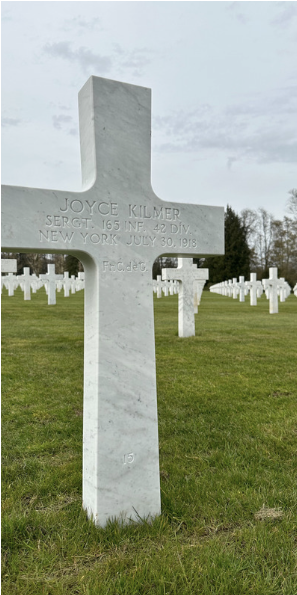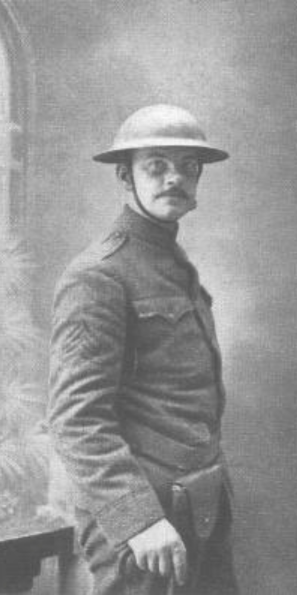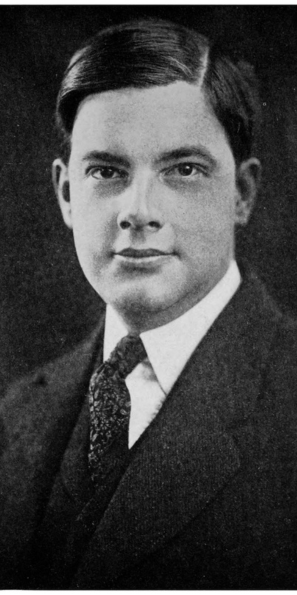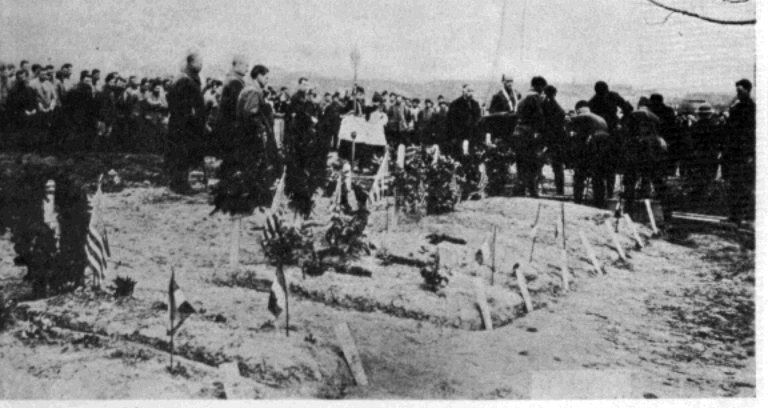Remembering Sgt. Joyce Kilmer during National Poetry Month
Battlefield poetry has long been a method by which mankind has marked the wars of their time—from Homer’s “The Iliad” to Alfred to Lord Tennyson’s “The Charge of the Light Brigade” and Julia Ward Howe’s “Battle Hymn of the Republic.” Even amateur poet Francis Scott Key’s original words “The Defence of Fort McHenry,” penned during the War of 1812, have lived on through history, adopted by Congress in 1931 as the U.S. national anthem “The Star-Spangled Banner.”
Poetry also served an important function to help ground soldiers throughout the rigors and trauma of combat, and in the years that followed. Even today, poetry and creative writing is an important tool for many coping with the impacts of post-traumatic stress brought on by wartime service.
In honor of National Poetry Month, celebrated in April, ABMC is highlighting the service and legacy of one such poet buried at the Oise-Aisne American Cemetery in France.
Sgt. Joyce Kilmer, a native of New Jersey, had gained considerable national fame upon publication of his work, “Trees” in “Poetry: A Magazine of Verse” in 1913. Simplistic and traditional in structure and often sentimental in spirit, his many published works held reflections of his faith and in the natural beauty of the world around him. Kilmer bore many of the characteristics of a Romantic poet at a time when the art had begun to shift toward Modernism, which—paired with a relatively prolific pace—has left very specific works to stand the test of time.
He enlisted with the New York National Guard several days after the U.S. entered into World War I and was assigned to the 165th Infantry Division—later redesignated at the Fighting 69th. By November 1917, Kilmer’s unit had arrived in France.
Prior to his departure, Kilmer had worked with publishers to write a book about the war to be entitled, “Here and There with the Fighting Sixty-Ninth.” Though his pace slowed during the conflict, one of his wartime works was called, “Rouge Bouquet,” a recollection and tribute to the 19 American service members killed by a German artillery bombardment in the Rouge Bouquet wood near Baccarat, France, on March 7, 1918. An excerpt reads:
There is on earth no worthier grave
To hold the bodies of the brave
Than this place of pain and pride
Where they nobly fought and nobly died.
On July 30, 1918, during the Second Battle of the Marne, Kilmer volunteered to accompany the battalion leading the U.S. attacks. It is believed he was scouting the position of a German machine gun, but was later found by his fellow soldiers, killed by a single gunshot wound to the head. He was just 31 years old.
For his valor, Kilmer was posthumously awarded the Croix du Guerre by the French. He was later buried at the Oise-Aisne American Cemetery (Plot B, Row 9, Grave 15), near the farm where he was killed.
Today, Kilmer is memorialized not just by ABMC, but as the namesake of several schools, parks and even the Joyce Kilmer Memorial Forest in North Carolina, a 3,800-acre stretch of land containing one of the largest contiguous tracts of old growth forest in the Eastern part of the U.S.
While he never returned from the war to write his book about the Fighting 69th, his works and legacy have far outlived him—including his poem, “When the Sixty-ninth Comes Back,” a stanza of which reads:
We brought back from the Border our Flag—’twas never lost;
We left behind the land we love, the stormy sea we crossed.
We heard the cry of Belgium, and France the free and fair,
For where there’s work for fighting-men, the Sixty-ninth is there.
The ABMC honors his service, sacrifice, and contributions to the literary world.
Pictures:
Description: Sgt. Joyce Kilmer’s grave at Oise-Aisne American Cemetery in France (Plot B, Row 9, Grave 15).
Credits: ABMC
Description: Joyce Kilmer’s military portrait, following his enlistment in the New York National Guard 1917.
Credits: Public domain
Description : Joyce Kilmer’s Columbia University yearbook portrait, circa 1908.
Credits : Public domain
Description: The memorial service held by soldiers of the Fighting 69th for the 19 men lost in the March 7, 1918, Rouge Bouquet bombardment, which served as inspiration for his poem, “Rouge Bouquet.”
Credits: Regimental Photographer, 69th Inf. Regt / 165th Inf. Regment / 42nd Infantry Division, United States Army




